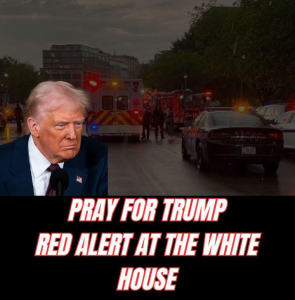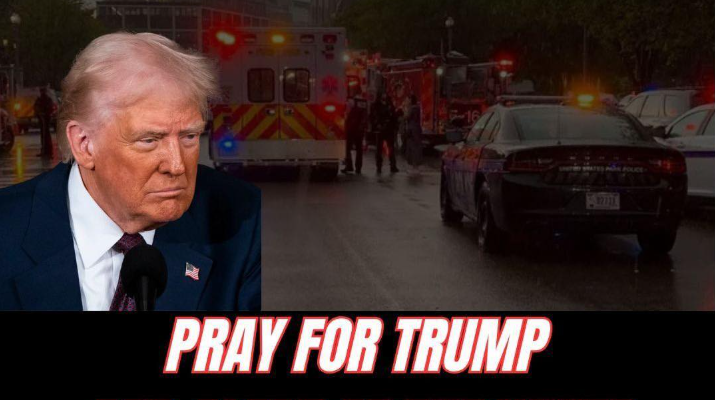When Emergency Powers Meet Political Reality: The Battle for America’s Capital
Washington, D.C. has always been more than just a city. It is the living symbol of American democracy—a stage where power, protest, and politics collide. But in times of crisis, the very heart of the nation has repeatedly become the site of fierce debate: who controls the capital when the stakes are highest? Is it the local government, the President, or Congress? The tension between emergency powers and political reality has shaped not only Washington’s governance but also the future of the country.
A City Without a State
Unlike other American cities, Washington, D.C. occupies a strange place in the constitutional order. It is not a state, and its residents—over 700,000 people—do not have full voting representation in Congress. Instead, the Constitution grants Congress “exclusive legislation in all cases whatsoever” over the federal district. This means the capital exists in a liminal space, caught between self-governance and federal oversight.
For most of its history, Washington was directly controlled by Congress, with no elected mayor or council. That changed in 1973 with the Home Rule Act, which allowed D.C. to elect local leaders but preserved the federal government’s power to override local laws. Even today, every decision—from budgetary allocations to criminal codes—can be reviewed or blocked by Congress.
This legal arrangement becomes most fraught during emergencies. Who decides how to protect the capital? Who commands the National Guard? And how much autonomy do Washingtonians really have when federal officials view the city not as a community but as a fortress of national power?
Flashpoints in Crisis
Throughout modern history, moments of unrest have brought the conflict into sharp relief.
-
1968 Riots: Following the assassination of Martin Luther King Jr., protests and riots engulfed Washington. President Lyndon B. Johnson deployed federal troops to restore order. Tanks rolled through city streets, and residents suddenly found themselves under martial control. The city’s lack of self-determination meant Washingtonians had no meaningful say in how their neighborhoods were policed.
-
Post-9/11 Security State: After the September 11 attacks, D.C. became a fortress. Concrete barriers, checkpoints, and new surveillance networks transformed the city. Federal agencies exercised sweeping authority, often with little consultation with local leaders. For residents, the capital became a place of heightened security measures where ordinary life collided with the demands of national defense.
-
2020 George Floyd Protests: The question of emergency power reached new intensity. During mass protests near the White House, President Donald Trump mobilized federal law enforcement officers and sought to take control of the D.C. National Guard. Mayor Muriel Bowser pushed back, demanding that federal agents leave the city. The visual clash between demonstrators and riot police highlighted the fragile balance of democracy in the capital itself.
-
January 6, 2021: The insurrection at the Capitol was perhaps the starkest illustration of this power struggle. As rioters stormed the halls of Congress, urgent calls were made to activate the D.C. National Guard. But because the mayor lacked authority to deploy the Guard independently, delays ensued while Pentagon officials debated. By the time troops arrived, the damage was done. The chaos underscored how the District’s unique political status had left it dangerously vulnerable.
The Politics of Emergency Powers
At the center of these struggles lies a simple question: who should have the final word when Washington faces crisis?
-
The President: As commander-in-chief, the President has immense power over military deployment. Because D.C. is not a state, its National Guard reports to the President rather than the mayor. This means that, in theory, the White House can bypass local leaders entirely during emergencies. Supporters argue this is necessary to defend the federal government, which sits in Washington. Critics counter that it erodes local democracy and creates opportunities for political abuse.
-
Congress: With its constitutional authority, Congress can legislate the city’s response to crises. Over the years, proposals have been introduced to grant the mayor more autonomy or to admit D.C. as a state. But partisanship often turns these debates into ideological battles. Republicans frequently resist, fearing that D.C. statehood would add Democratic seats to Congress. Thus, the city remains caught in a cycle of limited sovereignty.
-
The Mayor and Council: Local leaders argue that D.C. residents deserve the same rights as other Americans. Mayor Bowser has repeatedly called for statehood, pointing out that D.C. pays more federal taxes per capita than many states while lacking full representation. In emergencies, however, her powers are curtailed, leaving her office dependent on federal goodwill.
The Human Dimension
Behind these institutional battles lies the daily reality of Washington’s residents. For them, emergencies are not abstract constitutional questions but lived experiences.
Imagine being a shop owner during the 1968 riots, watching soldiers patrol your block. Or a parent during January 6, keeping your children indoors as chaos unfolds near the Capitol. For ordinary Washingtonians, emergency powers are not just legal doctrines—they determine whether their neighborhoods are safe, whether their voices are heard, and whether their rights are respected.
Many residents express frustration at being treated as pawns in national politics. “We’re Americans too,” one D.C. teacher said during the 2020 protests. “But when it matters most, we don’t get a say in how our city is protected.” This sense of disenfranchisement fuels the ongoing statehood movement, which argues that only full representation can resolve the contradictions of emergency governance.
The Future of the Capital
As political polarization deepens, the stakes of this debate only grow sharper. What happens the next time mass protests erupt in Washington? What if a terrorist threat requires immediate action? Or if a future president decides to use emergency powers for political gain?
Several proposals circulate in the halls of power:
-
D.C. Statehood: Advocates push for making Washington the 51st state, giving it senators and a voting representative. This would also give the mayor control over the National Guard. Opponents argue it would require constitutional amendments and disrupt the federal government’s neutrality.
-
Expanded Home Rule: Some lawmakers propose granting the mayor limited authority over the Guard during emergencies, while still allowing federal intervention when the nation itself is at risk.
-
Status Quo: Others believe the current arrangement, though imperfect, ensures the federal government can always protect itself. They argue that Washington is unique and cannot be treated like any other city.
Conclusion: A City on the Frontline
Washington, D.C. is not just the backdrop of American democracy—it is the test of it. Each time crisis strikes, the capital becomes a mirror reflecting the nation’s unresolved contradictions: between federal authority and local rights, between security and freedom, between democracy in principle and democracy in practice.
When emergency powers meet political reality, the result is rarely neat. Tanks in the streets, protesters in Lafayette Square, or rioters scaling the Capitol walls—all these moments reveal the fragility of governance in America’s capital. Until the question of D.C.’s status is resolved, the city will remain caught between two worlds, both the seat of power and a community denied its own.
The battle for Washington is not just about the right to govern. It is about whether the ideals proclaimed in the marble monuments around the Mall—liberty, equality, representation—truly extend to the people living in the shadow of the Capitol dome.


